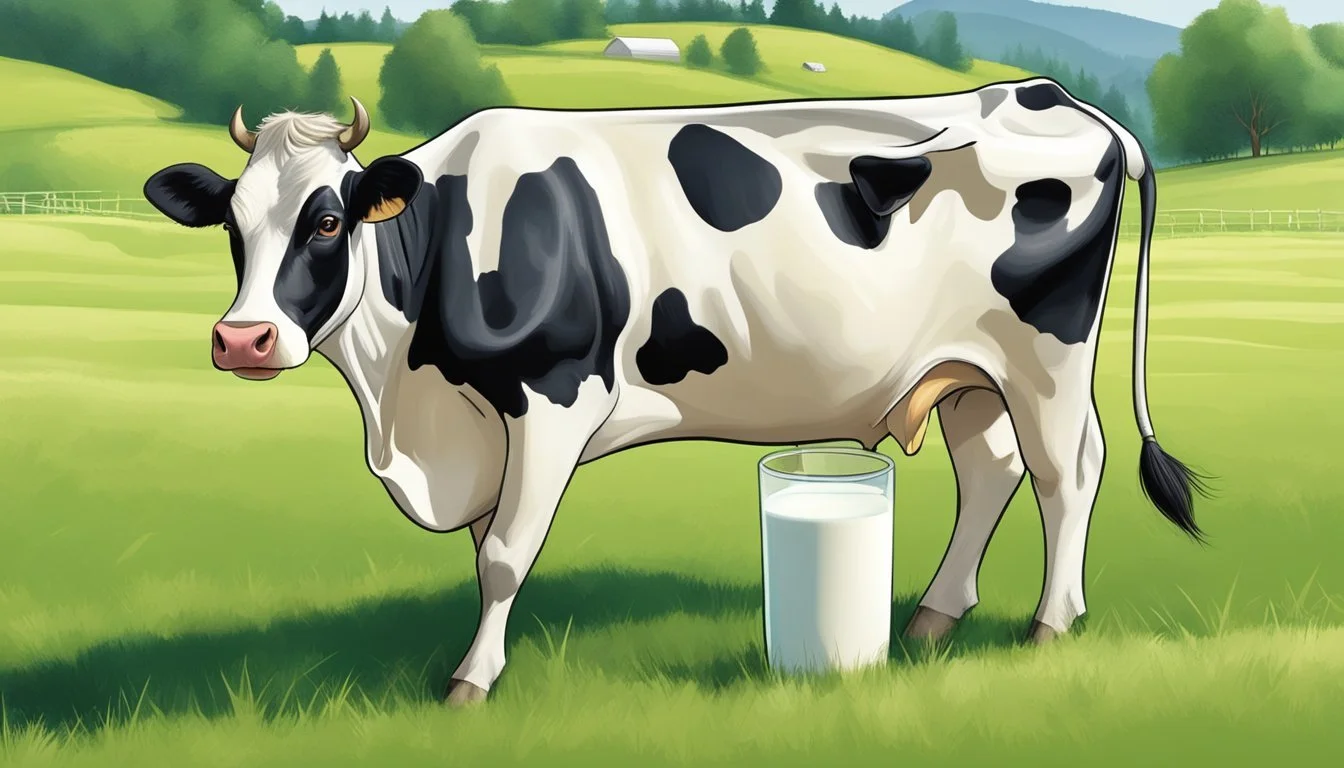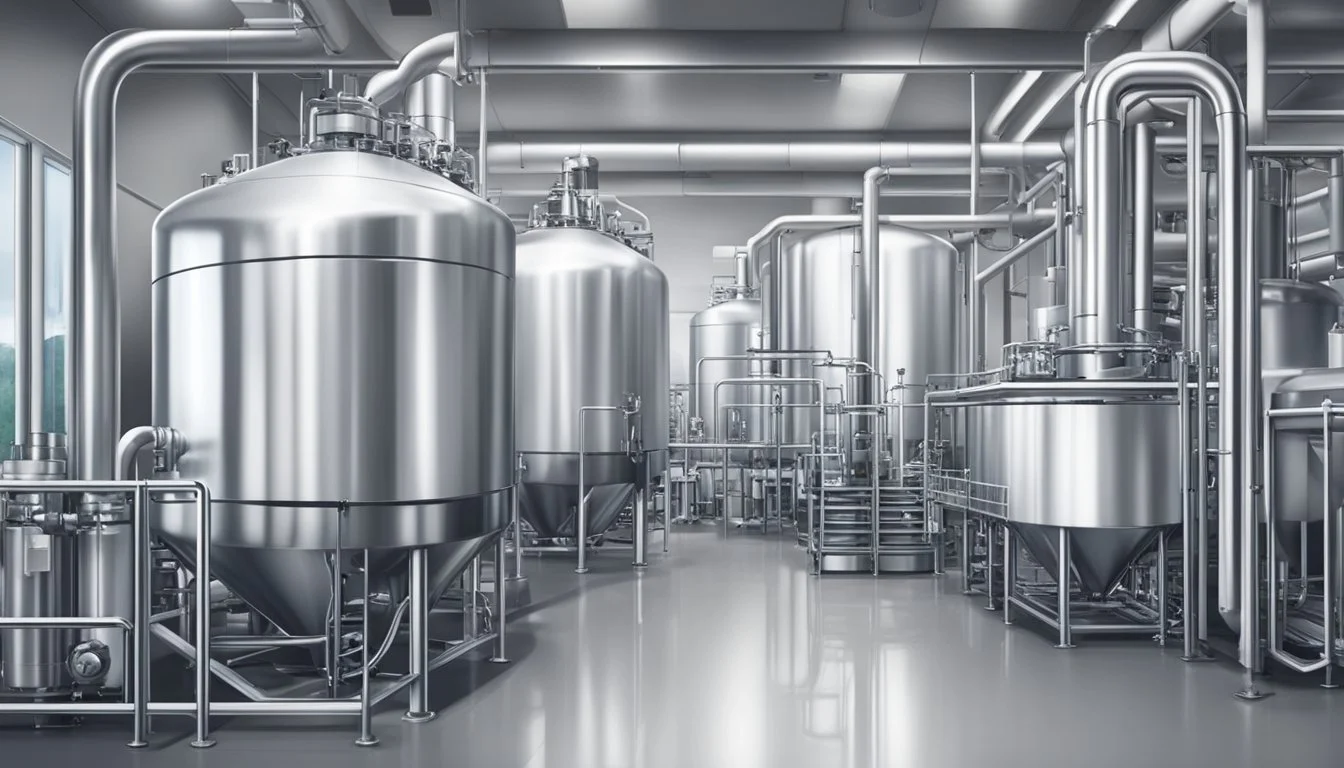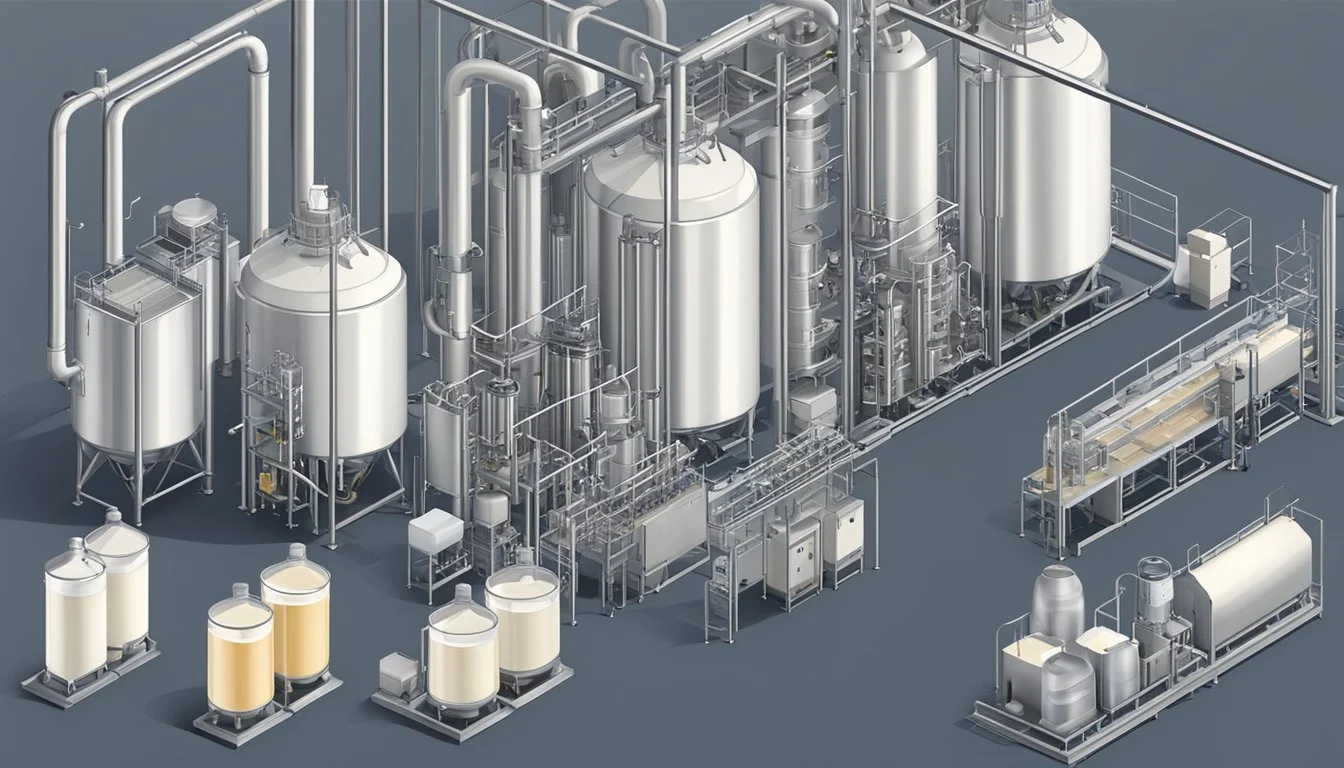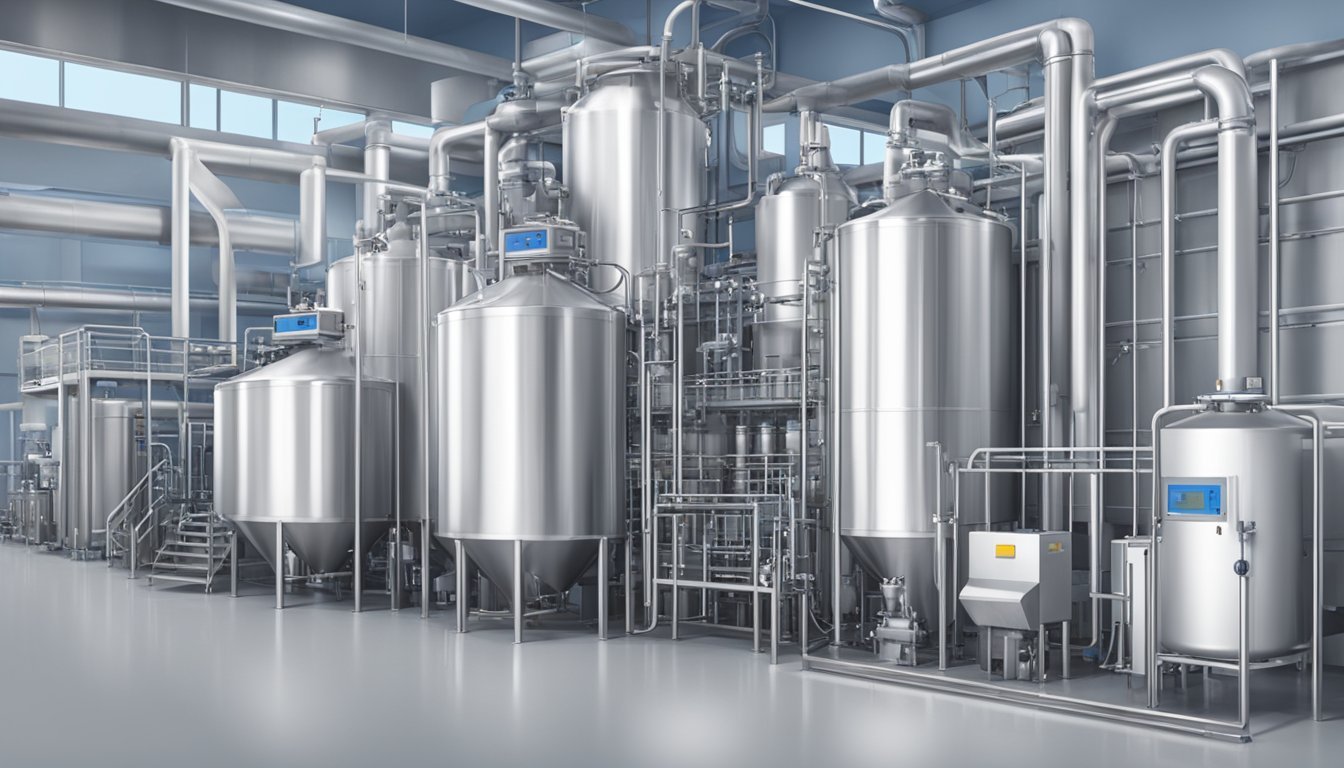A Comparison of Raw Milk and UHT Milk
Unveiling the Differences in Processing and Health Benefits
Milk has long served as a fundamental nutrient source in the human diet, providing essential proteins, vitamins, and minerals. The consumption of milk can be segmented into two primary categories: raw milk and ultra-high temperature (UHT) treated milk. Raw milk is milk as it comes from the cow, unpasteurized and without any heat treatment, thereby preserving its natural enzymes and flavor. However, due to safety concerns regarding pathogens, raw milk consumption is controversial and regulated or outright forbidden in many regions.
Ultra-high temperature (UHT) milk, on the other hand, is processed by heating the milk to temperatures exceeding 130°C for a few seconds, which effectively sterilizes the milk, destroying harmful microorganisms. This process results in an extended shelf life, significantly reducing spoilage and allowing for safe distribution and storage without refrigeration until opened. The industrial preference for UHT milk is also associated with reduced transportation and storage costs due to its stability at ambient temperatures.
The nutritional impact of these two processing methods is frequently debated. While UHT treatment ensures the safety of milk by eradicating pathogenic bacteria, it may also alter the milk's chemical composition and nutritional quality. For instance, heat treatment can impact protein structures, potentially affecting digestibility and the bioavailability of certain nutrients. Moreover, the changes in milk's flavor profile and the potential formation of off-flavors are concerns that influence consumer preferences. The choice between raw and UHT milk is a balance between the desired nutritional and sensory attributes and the assurance of microbial safety.
Discover the fascinating nuances between raw milk and UHT milk with "A Comparison of Raw Milk and UHT Milk"! This insightful guide provides an in-depth exploration of the distinctive qualities of both types of milk, shedding light on their unique attributes and benefits.
Gain a deeper understanding of the seasonal nature of raw milk production and how it impacts its flavor and composition, setting it apart from UHT milk. Explore the potential benefits of raw milk for athletic performance and how it contrasts with raw vs. plant-based milks, providing a natural source of nourishment for active lifestyles.
Uncover intriguing raw milk fast facts that highlight the nutritional richness and inherent qualities of raw milk. Delve into the compelling raw milk economic benefits and how the production and consumption of raw milk contribute to sustainable agricultural practices and local economies.
"A Comparison of Raw Milk and UHT Milk" offers a comprehensive perspective on these two milk varieties, empowering you to make informed choices about the dairy products you incorporate into your lifestyle. Whether you're seeking a deeper understanding of milk production or considering the best option for your dietary needs, this guide provides valuable insights into the world of dairy consumption.
Overview of Milk Processing
Milk processing is a crucial step in transforming raw milk into forms that are safe, stable, and suitable for consumption. This involves various heat treatments to eliminate pathogens and extend shelf life, with specific processes like pasteurization and ultra-high temperature (UHT) processing playing pivotal roles.
Raw Milk Processing
Raw milk, obtained directly from animals, is susceptible to microbial contamination and requires treatment to become safe for consumption. Pasteurization is a common method where milk is heated to a specific temperature for a set period, typically employing one of two processes:
Low-Temperature Long Time (LTLT): Heated to 63°C for 30 minutes.
High-Temperature Short Time (HTST): Heated to 72°C for 15 seconds.
These methods utilize heat exchangers for indirect heating, deeming the milk pasteurised. After heat treatment, the milk is rapidly cooled to inhibit any further bacterial growth. Pasteurization aims to reduce microbial load while maintaining nutritional value.
UHT Processing and Technology
UHT Processing elevates the heat treatment concept by using ultra-high temperature to produce a commercially sterile product. It involves:
Heating milk to 138-145°C for a very brief holding time of 2-10 seconds.
Methods like direct steam heating, steam injection, or steam infusion.
The technology behind UHT processing includes homogenisation, which helps in uniform heat distribution and texture, and aseptic packaging to maintain sterility. These steps result in a product stable at room temperature for several months, avoiding the need for refrigeration. UHT treatment aims to minimize impact on the nutritional aspects of milk while achieving sterility and extended shelf life.
Chemical and Physical Changes During Processing
During the processing of milk, particularly in UHT (Ultra-High Temperature) treatment, significant changes occur to its proteins and fats, and reactions like Maillard browning can alter its nutritive and sensory attributes.
Effects on Milk Proteins
Milk proteins, mainly casein and whey proteins, undergo denaturation when subjected to UHT processing. The heat treatment causes whey proteins to unfold and attach to the casein micelles, forming larger aggregates. This modification can affect the milk's physical properties and may lead to changes in protein fractions, potentially impacting the physicochemical properties of the milk, such as viscosity.
Effects on Milk Fat
Heat processing affects milk fat by initiating the breakdown and redistribution of fat globules, which can lead to fat separation. The thermal treatment causes lipids to become more susceptible to oxidation, and the physical properties like the color or creaminess of milk may be altered as a result.
Maillard Reaction and Other Changes
Maillard browning is a complex chemical process that occurs during the heat treatment of milk, leading to the formation of Maillard reaction compounds. These compounds develop as a result of the reaction between milk proteins and lactose, which may result in a darker color and changes in flavor. Additionally, compounds such as formic acid and acetic acid may be produced, further affecting the taste and stability of the milk.
Nutritional Impacts
The processing of milk, particularly through ultra-high-temperature (UHT) processes, alters its nutritional profile in various ways, affecting vitamins and minerals, protein quality, and enzymes. Understanding these changes is crucial for assessing the health implications of consuming different types of milk.
Vitamins and Minerals
UHT milk, which undergoes heating above 135°C, can experience a reduction in certain heat-sensitive vitamins like vitamin C and the B vitamins, including thiamine and folate. However, levels of vitamin A and carotene are largely unaffected by pasteurization and UHT processes. In terms of minerals, the content in milk remains relatively stable through the UHT treatment.
Impact on Protein Quality
The protein content of milk is not significantly altered by pasteurization or UHT processing. However, the structure of proteins can be modified, potentially affecting their digestibility. UHT treatment can lead to the formation of furosine, a marker of protein damage. Despite this, protein alterations during UHT treatment do not significantly impede the postprandial utilization of milk nitrogen in humans.
Enzymes and Immunological Components
UHT processing has a profound effect on enzymatic activity in milk. Lactoperoxidase and immunoglobulin are denatured, reducing their immunological benefits. Additionally, enzymes involved in proteolysis, which break down proteins into peptides, are deactivated. The formation of lactulose, a marker for heat treatment, confirms the extensive heat treatment of UHT milk, which inhibits the activity of beneficial enzymes within.
Shelf Life and Microbiological Considerations
Raw milk and Ultra-High Temperature (UHT) milk differ significantly in their shelf life and microbiological stability. This section examines how processing affects the longevity and microbial safety of milk.
Shelf-Life Enhancement
Shelf life is a critical quality aspect of milk, denoting the time it remains suitable for consumption under specific storage conditions. UHT milk exhibits a significantly extended shelf life compared to raw milk due to the application of high temperatures which render the milk commercially sterile. This process inactivates psychrotrophs, microorganisms that can grow at refrigeration temperatures, often responsible for spoilage in milk and dairy products.
Raw Milk: Exhibits a shorter shelf life; spoilage can occur within several days.
UHT Milk: Can remain stable for six to nine months when properly stored due to UHT processing, which involves heating milk above 135°C for a few seconds.
Microbiological Safety and Spore Destruction
Microbiological safety is paramount to ensure consumer health and the quality of milk. UHT milk achieves a high level of microbiological safety through temperatures sufficient to destroy harmful microorganisms, including pathogens and Bacillus spores.
Spore Destruction: UHT processing targets heat-resistant spores, ensuring the milk becomes commercially sterile.
Microfiltration: An additional step that can be integrated with pasteurization to remove bacteria and enhance the safety and shelf life of milk.
In conclusion, UHT processing significantly enhances the shelf life and microbiological safety of milk, mitigating spoilage risks associated with raw milk and preserving quality for extended periods.
Sensory and Quality Attributes
When evaluating the sensory and quality attributes of raw and UHT milk, it is crucial to consider the flavor profile differences, texture and consistency, and aesthetic and color changes. These factors affect consumer perception and product acceptability.
Flavor Profile Differences
Raw milk offers a complex, often variable flavor profile that can be significantly altered by specific breed, feed, and handling practices. In contrast, UHT (Ultra-High Temperature) milk exhibits a more uniform flavor due to the high-heat treatment which can induce milk sterilization leading to off-flavors like a cooked or burnt taste. UHT processing may also result in minor hydrolysis of fats and proteins, contributing to distinct flavor notes absent from raw milk.
Texture and Consistency
The texture and consistency of milk are critical to product quality. Raw milk typically presents a naturally smooth texture. UHT milk, because of the heat treatment involved, can exhibit changes in texture such as a slightly thicker, creamier consistency. This can be attributed to the denaturation of proteins, which may also lead to sedimentation or age gelation—a gradual increase in viscosity over time.
Aesthetic and Color Changes
Color is a key quality indicator for milk; consumers often associate purity with a bright, white color. While raw milk has a color that can slightly vary based on the cow's diet, UHT milk undergoes color changes due to the Maillard browning reaction during processing. Although subtle, these changes may impact consumer perception with the milk appearing slightly less white. Nonetheless, both raw and UHT milk maintain a color deemed acceptable by industry standards, barring any quality issues.
Technological Advances in UHT Processing
Ultra-high temperature (UHT) processing has evolved with technological enhancements that ensure the milk retains its nutritional value while extending its shelf life. Innovations in heating methods and preservation techniques are pivotal to these advancements.
Innovative Heating Methods
Traditional UHT processing typically involves heating milk to temperatures between 138-145°C for 2-10 seconds. This ensures the destruction of microorganisms and spores to achieve commercial sterility. However, advancements have led to the exploration of alternative heating methods that offer various benefits in terms of efficiency and quality preservation.
Microwave Heating: A relatively new method in the UHT treatment process which tends to be faster and more uniformly distributed than conventional heating. This technique can reduce the thermal damage to milk proteins, particularly whey proteins, which are sensitive to heat.
High Pressure Processing (HPP): Although not a heating method, HPP uses high pressure to achieve microbial inactivation similar to thermal methods. It has the advantage of preserving the sensory and nutritional qualities of UHT milk better than traditional thermal methods.
Emerging Preservation Techniques
Beyond heating, preservation techniques have been developed or improved to complement UHT processing, furthering the quality and shelf-stability of UHT milk.
Pulsed Electric Fields (PEF): This non-thermal pasteurization method uses short bursts of high voltage to inactivate microorganisms. It is known for its low energy consumption and minimal thermal impact on nutrients and flavor.
Ultrasound: Another non-thermal method that utilizes high-frequency sound waves to aid in the UHT treatment, reducing the processing time and possibly lessening the impact on milk proteins, including both casein and whey proteins.
These technological innovations not only contribute to the safety and longevity of UHT milk but also help to maintain its nutritional profile, ensuring that UHT milk continues to be a valuable food product on a global scale.
Packaging and Storage Solutions
The longevity and safety of milk products are directly influenced by advancements in packaging and meticulous storage conditions. Both raw and UHT milk demand distinct packaging solutions to maintain nutritional quality and ensure extended shelf life.
Aseptic Packaging Technologies
Aseptic packaging plays a pivotal role in preserving the quality and extending the shelf life of UHT milk. It involves the sterilization of packaging materials in addition to the milk itself, creating an environment where the milk remains safe and stable at room temperature. The aseptic packaging process typically includes:
Pre-heating: To prepare the packaging material for sterilization.
Deaeration: To remove air that could contain contaminating microorganisms.
Sterilization: Using hydrogen peroxide or heat to ensure packaging is free from contaminants.
Filling and Sealing: Conducted in a sterile environment to prevent the ingress of any microbes.
The stability of UHT milk in these conditions can be several months without refrigeration, making them highly effective for storage and distribution.
Storage Conditions and Stability
The stability and quality of UHT milk during storage are influenced by factors that include the quality of the raw milk, the processing methods employed, and the effectiveness of the aseptic packaging. Storage conditions for UHT products typically require:
Temperature: They can be stored at room temperature, unlike raw milk, which requires refrigeration.
Light: Exposure to light can affect the quality of milk; hence, packaging often is opaque to protect the content.
Packaging Type: Materials used in packaging can range from cartons to plastic pouches, which must provide a suitable barrier to light and air.
Choosing the right packaging type along with proper storage conditions is critical to ensure the stability and safety of UHT milk during its intended shelf life.
Consumer Health and Nutritional Education
The dietary choices of consumers are greatly influenced by their perceptions of the nutritional quality and health implications of dairy products, especially when choosing between raw and ultra-high-temperature (UHT) processed milk. This section sheds light on these perceptions and the role educational initiatives play in shaping consumer knowledge and ultimately, their health.
Perceptions of Raw vs. UHT Milk
Raw milk is often touted by enthusiasts for its naturalness and purported health benefits, such as a richer profile of enzymes and potential probiotics. This perception is countered by concerns from health authorities about the risks of pathogen contamination, which can lead to serious illnesses.
UHT milk, on the other hand, is appreciated for its extended shelf life and safety profile. It is subjected to high temperature processing which effectively eliminates most microorganisms. Some consumers, however, are skeptical about the nutritional changes and taste alterations due to this process.
Nutritional Aspects
Raw milk: believed to contain higher levels of beneficial enzymes and possibly more bioavailable nutrients.
UHT milk: traditionally valued for microbiological safety, but thought to have fewer enzymes due to heat treatment.
Health Concerns
Raw milk: risk of contamination with harmful bacteria like Salmonella, E. coli, and Listeria.
UHT milk: concerns about potential degradation of certain vitamins due to high-heat processing.
Educational Initiatives and Labeling
Educational campaigns and clear labeling are pivotal in guiding consumers toward informed decisions regarding milk consumption. Regulatory bodies and health organizations aim to provide accurate information about the benefits and risks associated with both raw and UHT milk.
Regulations ensure that milk, whether raw or UHT, meets specific health standards to minimize public health risks.
Labeling requirements provide consumers with information on processing methods and nutritional content.
Nutrition education programs inform consumers about the differences in vitamin content, potential allergens, and the presence of beneficial or harmful microorganisms in milk.
Public health campaigns stress the importance of understanding the implications of milk processing methods.
These efforts collectively contribute to an enhanced understanding of how different types of milk align with personal health goals and dietary needs.
Regulatory and Safety Standards
Raw and UHT milk are subject to stringent regulatory and safety standards to ensure consumer health. These standards encompass both international guidelines and specific safety protocols during milk processing.
International Guidelines
International regulatory bodies, such as the Codex Alimentarius Commission, set out the basic measures for milk safety. UHT milk is required to be processed in a way that does not change the composition of the product, save for the destruction of microorganisms. Pasteurization, a less intensive form of sterilization, aims to kill pathogens without drastically affecting the milk's nutritional value.
Key components of these guidelines include:
Maintenance of the nutritional quality of milk.
Strict microbiological standards to ensure pathogen-free products.
Physico-chemical requirements, such as the absence of preservatives.
Safety Protocols for Milk Processing
During pasteurization and sterilization, safety protocols are critical to prevent contamination. The process includes:
Heat treatment to destroy harmful organisms. Pasteurization typically involves temperatures of 72°C for 15 seconds, whereas UHT (Ultra-High Temperature) processing involves temperatures above 135°C.
Post-processing controls to prevent secondary contamination.
For UHT milk, specific regulations mandate:
Alkaline phosphatase tests to confirm adequate heat treatment.
Packaging in sterile conditions to maintain shelf life and safety.
In summary, regulatory and safety standards for milk processing are designed to ensure safe, high-quality milk products through controlled pasteurization and sterilization methods while adhering to national and international guidelines.
Future Trends in Milk Processing and Consumption
As the dairy industry advances, new processing technologies and consumption patterns are emerging, driven by consumer demand and scientific innovation.
Innovations in Dairy Science
In the realm of dairy science, the development of novel processing techniques aims to extend the shelf life of milk while maintaining or enhancing its nutritional quality. Advanced spectroscopy and gas chromatography methods are increasingly employed for quality control, ensuring that milk retains its freshness and safety during extended periods of storage. These analytical techniques can detect subtle changes in milk composition, allowing for immediate corrective actions during processing.
Another innovation in the processing of dairy products involves the application of liquid chromatography. This precise technique separates and quantitatively assesses compounds, providing detailed insights into the milk's components. As a result, it aids in the swift identification of contaminants and improves the overall quality assurance process in the dairy industry.
Concurrently, the trend toward minimal processing with maximum safety is gaining traction. Consumers are seeking products that are as close to their natural state as possible, without compromising on safety. This demand drives dairy scientists to explore new pasteurization methods that have less impact on taste and nutritional content.
Ultra-High-Temperature (UHT) processing continues to be refined, with the goal of producing milk that has a long shelf life without the need for refrigeration. The latest UHT technologies focus on enhancing efficiency and minimizing nutrient loss, challenging the traditional trade-off between shelf life and nutritional value.
Developments in packaging, such as bio-based and recyclable materials, complement advancements in the processing of milk. These sustainable solutions not only serve to protect the product but also align with the environmental values of modern consumers.
As consumer preferences evolve and technologies advance, the future of milk processing will likely see an integration of these innovative techniques, leading to dairy products that are safe, nutritious, and sustainable. The industry expects to witness a continued emphasis on transparency and quality, with sophisticated methods like chromatography and spectroscopy playing pivotal roles in shaping the future of dairy science.







